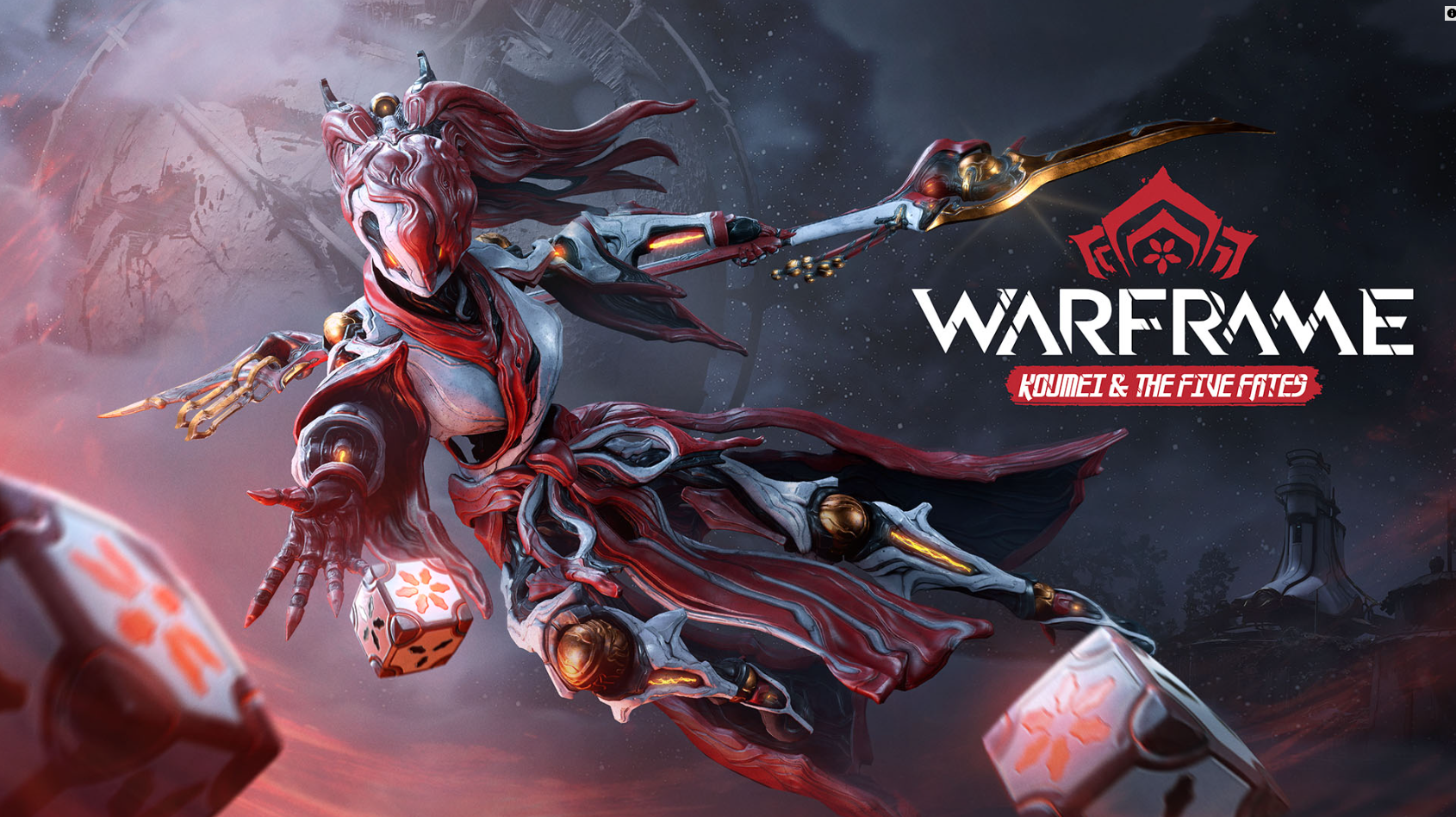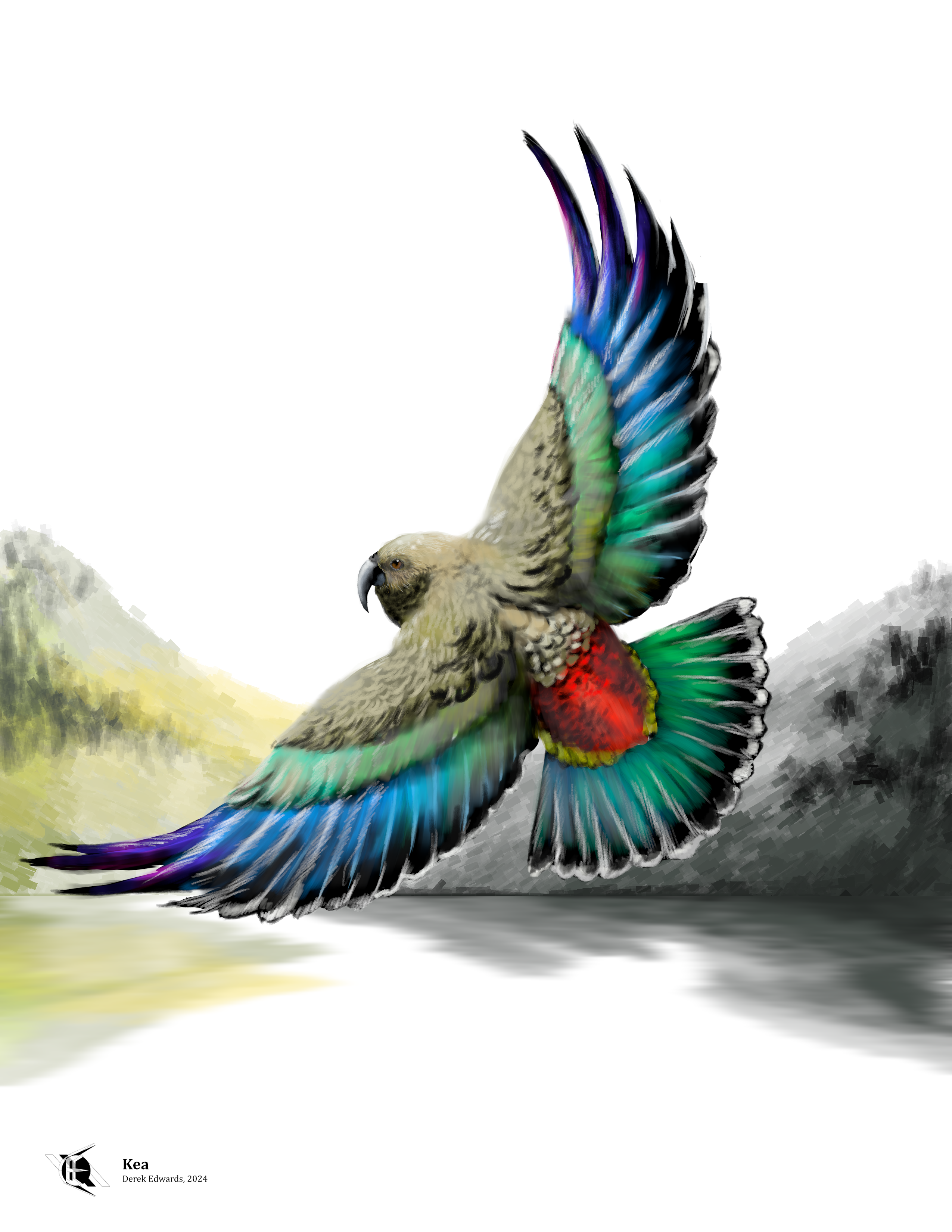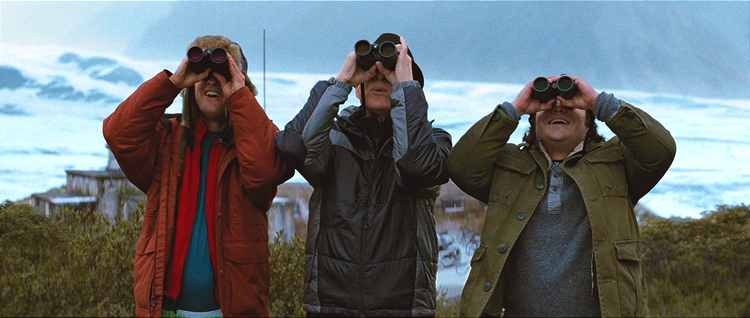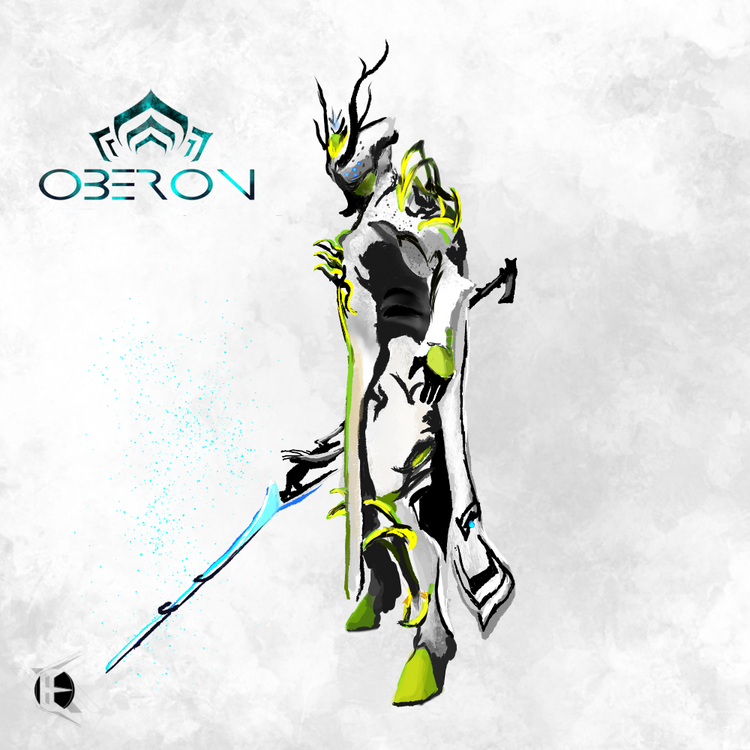
Running Commentary 10/7/2024
Hello,
I might have seen a Kirtland's warbler over the weekend. I saw something, a bit further away than I could see clearly through my binoculars. It definitely was dark gray above and yellow below, with white wingbars and eyering and streaking on its sides, but not across the breast. This could have been any of a few warblers, but it could have been a Kirtland's. I couldn't say with confidence though.
I did see a partially leucistic brown-headed cowbird yesterday.
Also, my review of The Acolyte is finally out.
Anyway...
Playing...

Warframe
We have a new update with a new 'frame and a bunch of improvements to the game, menu tweaks mostly, along with some upgrades for a few old 'frames, most especially to Caliban, who's needed a rework essentially from his release.
The Koumei Farm
I have just recently gotten Koumei and her weapons farmed from the new mission. I've actually fully farmed everything from the new mission besides the Koumei prex card. And that brings up an issue: the Saya's Vision mission is pretty good; it's fun; it's kinetic; it's decently easy to figure out what you're supposed to be doing without a tutorial. But it's not a lot of fun to play solo, certainly not over-and-over like is necessary to get Koumei. And, like the Voruna farm, the Dagath farm, the Jade farm, the Protea farm, etc., once you have completed the farm there's not much reason to play the mission ever again. So, after the initial frenzy of all the game's current players running the mission together over-and-over, new players, say those who start later this year when 2099 releases, are going to be stuck farming Koumei by themselves or trying and probably failing to recruit a squad. They're not going to have nearly as nice a time as current players are. Now, yes, recent frames having a "pity system" that guarantees that you'll get everything at least after a set number of runs, sooner if you're lucky, and that helps. but I think the boom-and-bust nature of a lot of 'frame farms is a growing problem in the game.
The Caliban Rework
So, Caliban got a rework. You might remember that when Caliban first came out, I described him as a damage-dealing 'frame who just dealt less damage than a good loadout of weapons, which, considering how late in the game he becomes available, made him pretty useless. Well, now he's a lot less useless. He's not the greatest 'frame in the game; this isn't like the Wukong or Inaros reworks. But Caliban does now feel distinct and special and worth picking if you want a particular play style.
His 1 is still pretty useless in terms of dealing damage, but it's been changed to more of a traversal power. It's not great as a traversal power either, compared to some other 'frames', but if you're trying to clear a gap that's too wide to jump/glide over normally, this could get you across. His 2 now has some better CC, suspending enemies up in the air, which is useful for getting headshots, etc., while also preventing them from attacking for a bit. It also gets them up clear from terrain, which helps his 4.
His 3 has been greatly improved. His summoned conculysts deal a noticeably higher amount of damage than they used to, and they last much longer. But he can now also summon ortholysts (which attack from range) or summalysts (which themselves summon a crowd of chorolysts to boost Caliban's shields and draw away enemy fire.) His 3 is now solidly his main ability, making him solidly a summoner 'frame. Each of the 3 types of summoned sentients fills a useful role: conculysts deal damage directly, ortholysts open enemies up to greater weapon damage, and summalysts aid in survivability.
His 4 has had some numbers re-tuned but is mainly the same power as before. In most high-level missions it's going to be more valuable as an armor strip than as damage directly. If you have conculysts active, they'll replicate the beam Caliban casts, same as before, but now they'll also aim at his target. It's probably best not to cast his 4 without having conculysts spawned, given how expensive a power it is to cast. And if you're main need is armor strip, I'd probably still go with a 'frame with a more spamable power.
All-in-all, Caliban is now at least a worthwhile 'frame, one that hopefully can find soem fans.


Bird of the Week
In November of 2023, the comedian John Oliver launched a campaign to influence the "Bird of the Century" contest held by New Zealand's Forest and Bird organization to celebrate the conservation group's 100th anniversary, pushing for the pūteketeke, which I suppose was the bird he thought looked funniest, in a move satirizing foreign election interference. The contest was technically open to non-New Zealanders, though it wasn't well-known outside of that country before Oliver featured it on his television show. The pūteketeke won handily, beating out the iconic kiwi (which took second) by a factor of more than twenty, despite efforts by New Zealanders to push back on the American-led effort.1 Lost in most reporting of the controversy, or mock-controversy, or whatever, is that the pūteketeke is not really a New Zealand bird. It's found in New Zealand, sure, that's how it got a Māori name, but it's also found throughout Eurasia and in large regions of Africa and Australia; it's even found in Oliver's native England, where it was given its English name: the Great Crested Grebe. I featured it under that name as a previous Bird of the Week. It's a real pity that such a common, widespread bird became an emblem of New Zealand, which is home to so many unique endemic species, including not one but two of the world's strangest parrots: the previously-featured kākāpō, and this week's bird, the Kea.
The kea is an alpine parrot, the only one in the world. It lives in the mountains of the South Island, travelling seasonally throughout the region, especially while young. It behaves a bit more like a corvid than a parrot. Thye form small flocks of only a dozen or so individuals.2 They feed on a wide range of foods, largely fruit and seeds, but also insects, small animals, and even carrion and garbage. Most oddly, and most distressingly for New Zealanders, they feed on sheep. This does not seem to be a species-wide phenomenon, rather a learned behavior by particular groups, but they do feed on sheep.
Sheep are a big thing in New Zealand. The country is among the world's top per-capita consumers of mutton,3 and in the mid-20th Century, the New Zealand economy was largely based on wool exports.4 So when sheep started to be found with weird wounds in their backs, on an island with no wolves, the kea came under suspicion. Farmers asserted that keas killed sheep to eat their kidneys, and the New Zealand government issued a bounty on the birds.5,6 More, perhaps much more, than 150,000 keas were killed before the government reversed course and legally protected the birds;6 presently the IUCN estimates that there are around 4,000 mature keas, and an additional 2,000 juveniles, left.7
As an American, this all reminds me very much of the bald eagle. This was another bird-of-prey that was persecuted to near extinction because it was believed that it killed livestock. It didn't, really; eagles don't kill much anything larger than a salmon, but if something else killed a sheep or a cow, scavenging eagles were often the ones found feeding on the carcass, and since the eagle's scavenging habits were not initially well-known, they were blamed for the kill.8 So my initial thought was that the same had happened to the kea. Surely a hawk-sized parrot weren't killing entire sheep; they were just eating from sheep carcasses they found, right? Well, no, keas have been caught, on camera now, ripping into the rumps of sheep, not after their kidneys, but on the rich deposits of fat surrounding them.6 And, while this didn't kill the sheep directly, it left them susceptible to fatal infections.
Beyond their boldness in approaching sheep, keas are also known to be bold in approaching people and people's belongings. Keas are very smart, inquisitive birds, to put it charitably. To put it more bluntly, keas break and steal things. Their behavior is often that of unattended toddlers; keas have been known to rip the windshield wipers, gaskets, and radio antennas off from unattended cars.9 They're infamous for rummaging through the backpacks and tents of hikers, making off with various items, including, once, a running video camera.10 Keas have damaged the infrastructure of ski slopes.6 I have not found any report of a kea actually attacking a person, but they will approach people without care.
Keas are, again, now federally protected; killing them is illegal, no matter how much of a nuisance they become. Thier numbers are still declining, no longer due to people, but to other mammals, particularly stoats, who are a threat in two ways: they eat their eggs and nestlings, and the poisoned bait left to kill stoats sometimes also kills keas.7
The term "kea" is of Māori origin but is ultimately imitative of their call of "KAY-yuh"
To science, the kea is Nestor notabilis; the genus name, that of a wise, grey-haired king mentioned in the Iliad, was first given to the kea's similar-looking but more normally-behaving cousin, the kākā, on account of its gray feathers; the species name is simply Latin for "notable", which, year, about sums the kea up.11
- Forest and Bird. “Bird of the Century Winner Announced: Pūteketeke Pandemonium Prevails,” November 15, 2023. https://www.forestandbird.org.nz/resources/bird-century-winner-announced-puteketeke-pandemonium-prevails.
- Clarke, C.M.H. “Observations on Population. Movements and Food of the Kea Nestor Notabilis”. Notoris Volume 17, Issue 2, 1970 pages 105-114. https://www.birdsnz.org.nz/publications/observations-on-population-movements-and-food-of-the-kea-nestor-notabilis/.
- Our World in Data. “Per Capita Meat Consumption by Type,” n.d. https://ourworldindata.org/grapher/per-capita-meat-type.
- Gregory, Justin. “The Wool Shock of 1966.” Eyewitness, March 27, 2019. https://www.rnz.co.nz/national/programmes/eyewitness/audio/2018688111/eyewitness-the-wool-shock-of-1966.
- Benham, W.B. "Notes on the Flesh-eating Propensity of the Kea (Nestor notabilis)". Transactions and Proceedings of the Royal Society of New Zealand, Volume 39, 1906, Page 71 https://paperspast.natlib.govt.nz/periodicals/TPRSNZ1906-39.2.8.1.3
- Temple, Philip. “Kea: The Feisty Parrot | New Zealand Geographic.” New Zealand Geographic, March 18, 2018. https://www.nzgeo.com/stories/kea-the-feisty-parrot/.
- BirdLife International. “Nestor Notabilis.” IUCN Red List of Threatened Species, October 1, 2017. https://www.iucnredlist.org/species/22684831/119243358.
- Jack E. Davis, The Bald Eagle: The Improbable Journey of America’s Bird (Liveright Books, 2023), 161.
- “Kea Parrots Love to Dismantle Cars" Bird Watcher’s General Store. https://www.birdwatchersgeneralstore.com/kea-parrots-love-to-dismantle-cars/.
- Baker, Che. “Kea Steals GoPro From Hut on Kepler Track, Ends up Making Stunning Short Film.” Stuff, February 3, 2022. https://www.stuff.co.nz/travel/127688437/kea-steals-gopro-from-hut-on-kepler-track-ends-up-making-stunning-short-film.
- Jobling, J. A. (editor). The Key to Scientific Names in Birds of the World (S. M. Billerman et al. editors), Cornell Laboratory of Ornithology, Ithaca.
Curation Links
The Promise of Precision Agriculture Is Slowly Coming to Fruition | Eric Schmid, Undark
A look at how high-tech equipment is changing farming. A field can be as fine-tuned as any factory, with real-time, highly detailed soil samples and plant monitoring informing specific descisions about seeding, watering, etc.
Blots on a Field? | Charles Piller, Science
Overview of the work of Matthew Schrag, who has uncovered an incredible amount of fraud in the world of dementia research. “Blots on a Field?”, by the way, is maybe the greatest headline I’ve featured in any curation.
Just When You Thought It Wasn’t Safe… | Vicky Valosik, The American Scholar
A history of artistic swimming, which actually arose out of “water pageants”, costumed stage shows held in pools rather than stages, put on to encourage and teach Americans to swim.
The Truth | Stanisław Lem, trans. Antonia Lloyd-Jones, The MIT Press Reader
[FICTION] “Lem's 1964 story, published in English for the first time, tells the tale of a scientist in an insane asylum theorizing that the sun is alive.”
See the full archive of curations on Notion







Member Commentary